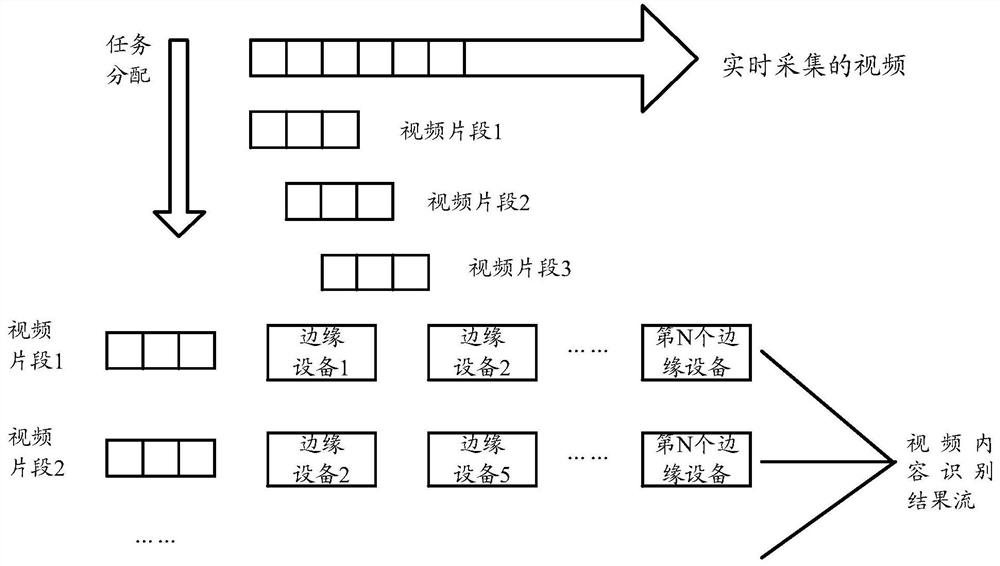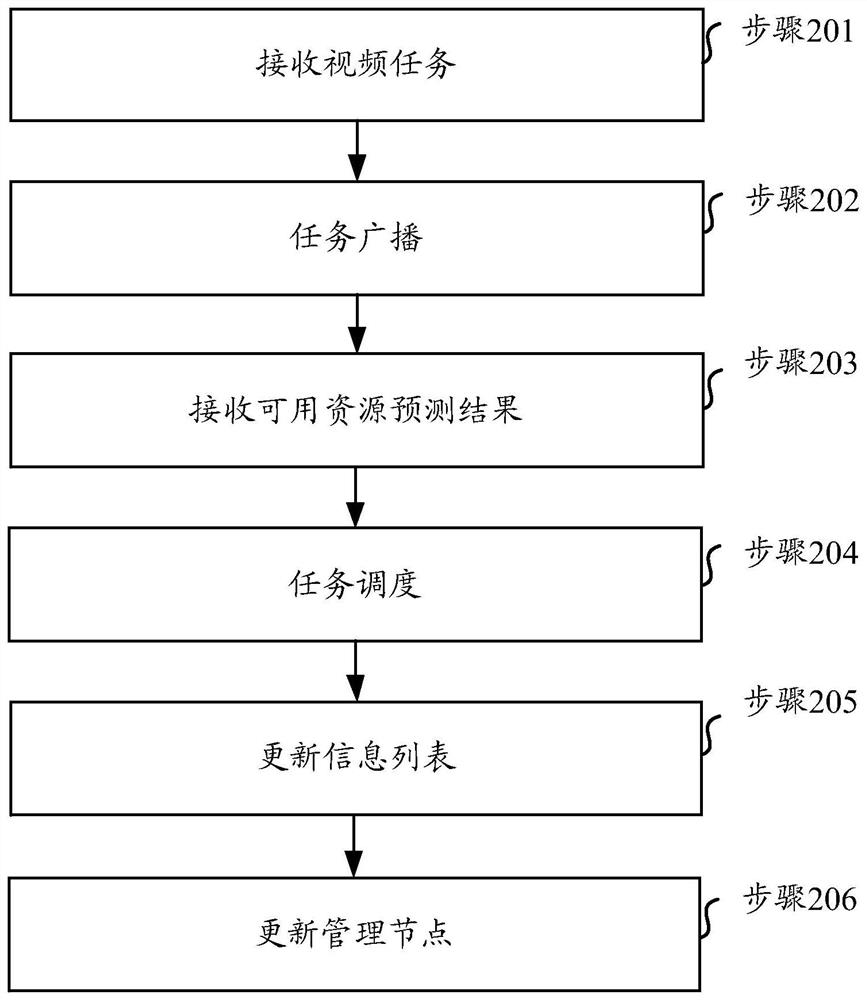A video content recognition method, device, medium and system
A technology for video content recognition and content recognition, applied in the field of video processing, can solve the problems of low recognition accuracy, high data transmission overhead, and high difficulty in equipment expansion and upgrading, and achieve the goal of ensuring accuracy, ensuring integrity, and reducing data transmission overhead. Effect
- Summary
- Abstract
- Description
- Claims
- Application Information
AI Technical Summary
Problems solved by technology
Method used
Image
Examples
Embodiment 1
[0063] Embodiment 1 of the present invention provides a method for identifying video content, and the method describes the method for identifying video content from the side of a content distribution server. The step-by-step process can be as follows figure 1 shown, including:
[0064] Step 101, task generation.
[0065] In this step, the content distribution server may segment the video captured by the camera in real time. Specifically, it may, but is not limited to, segment the video captured by the camera in real time according to a set duration. And each video segment obtained by segmentation can be packaged as a video task.
[0066] Step 102, task allocation.
[0067] In this step, the content distribution server may, for each video task, assign the video task to a management node in the edge device, the edge device is pre-selected, and instruct the management node to assign the video task to at least one edge The device is configured to perform content identification...
Embodiment 2
[0082] Embodiment 2 of the present invention provides a method for identifying video content, and the method describes the method for identifying video content from the side of an edge device serving as a management node. The step-by-step process can be as follows image 3 shown, including:
[0083] Step 201, receiving a video task.
[0084] In this step, the edge device as the management node can receive the video task assigned by the content distribution server.
[0085] Step 202, task broadcasting.
[0086] In this step, the edge device serving as the management node may broadcast the task requirement corresponding to the video task to pre-selected edge devices, each edge device except itself.
[0087] Step 203, receiving an available resource prediction result.
[0088] In this step, the edge device as the management node can receive the available resource prediction result reported by the edge device, the available resource prediction result is predicted by the edge d...
Embodiment 3
[0099] Embodiment 3 of the present invention provides a method for identifying video content, and the method describes the method for identifying video content from the side of an edge device that is a non-management node. The step-by-step process can be as follows Figure 4 shown, including:
[0100] Step 301, receiving a broadcast.
[0101] In this step, the edge device as the non-management node may receive the task requirement corresponding to the video task broadcast by the edge device as the management node.
[0102] Step 302. Determine the forecast result of available resources.
[0103] In this step, the edge device as a non-management node may determine the available resource prediction result and report it to the edge device as a management node. The available resource prediction result is predicted, and the remaining available resource information after removing the resource loss corresponding to the task requirement among the currently available resources instru...
PUM
 Login to View More
Login to View More Abstract
Description
Claims
Application Information
 Login to View More
Login to View More - R&D
- Intellectual Property
- Life Sciences
- Materials
- Tech Scout
- Unparalleled Data Quality
- Higher Quality Content
- 60% Fewer Hallucinations
Browse by: Latest US Patents, China's latest patents, Technical Efficacy Thesaurus, Application Domain, Technology Topic, Popular Technical Reports.
© 2025 PatSnap. All rights reserved.Legal|Privacy policy|Modern Slavery Act Transparency Statement|Sitemap|About US| Contact US: help@patsnap.com



